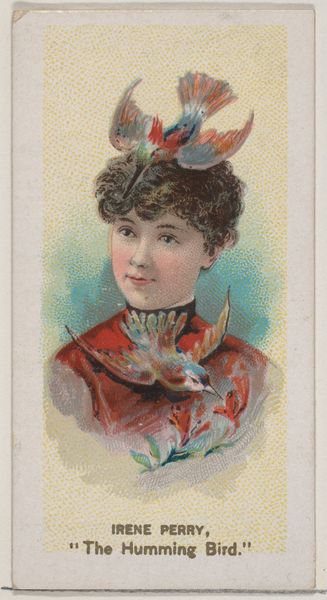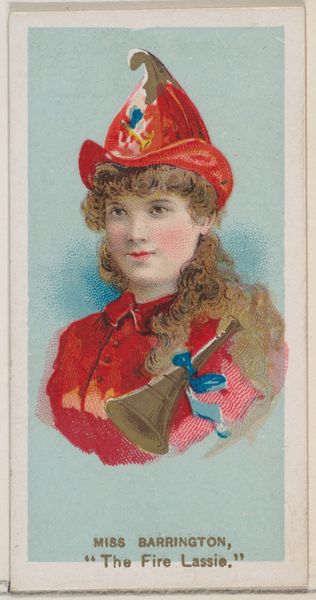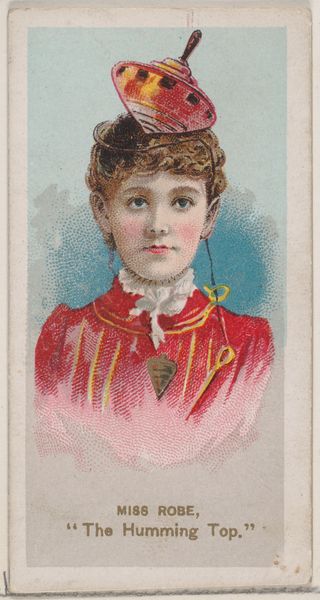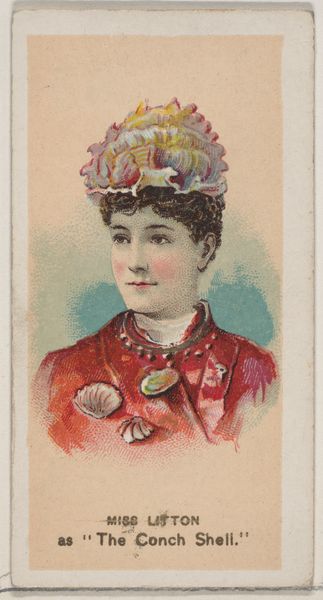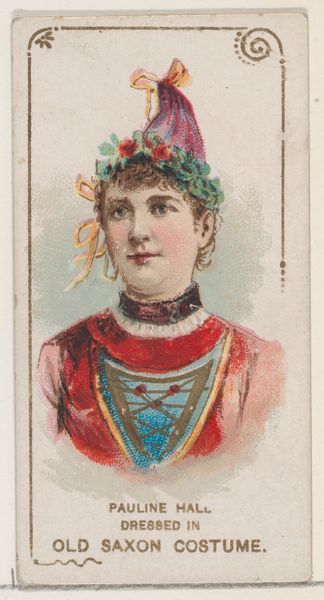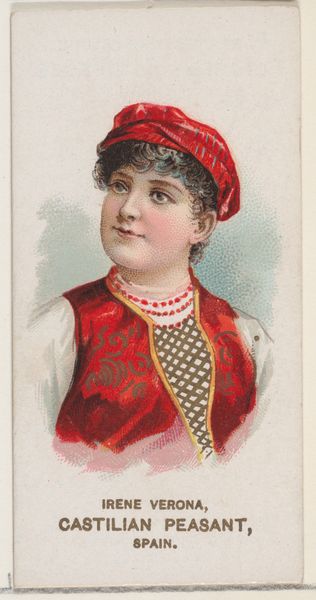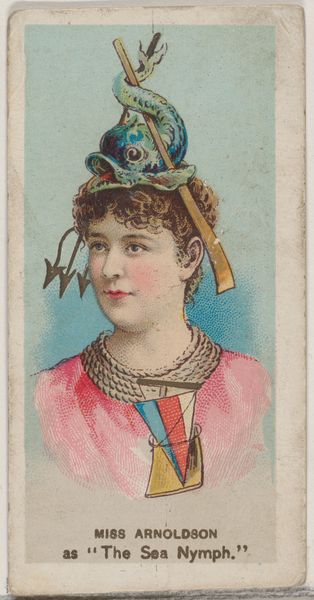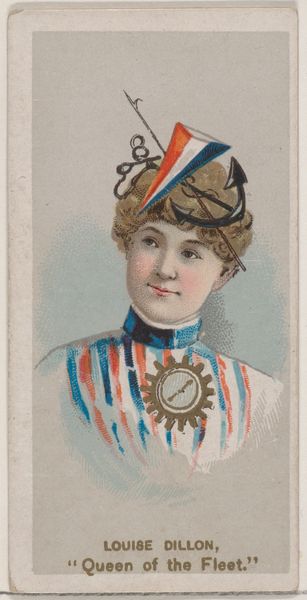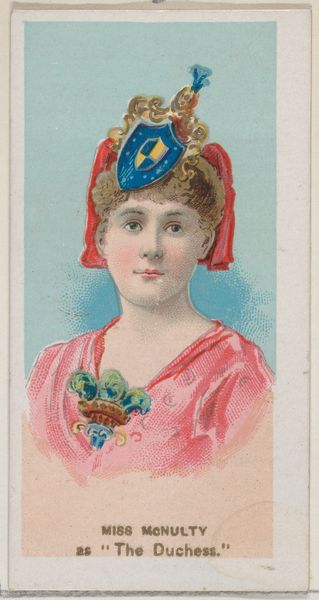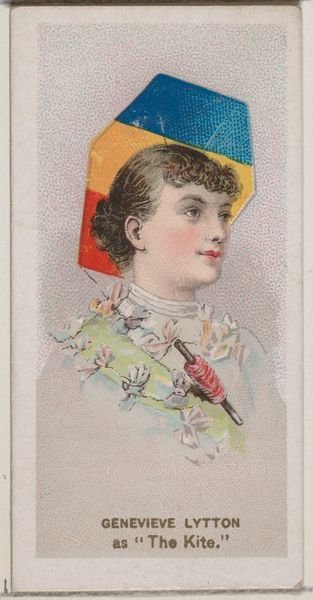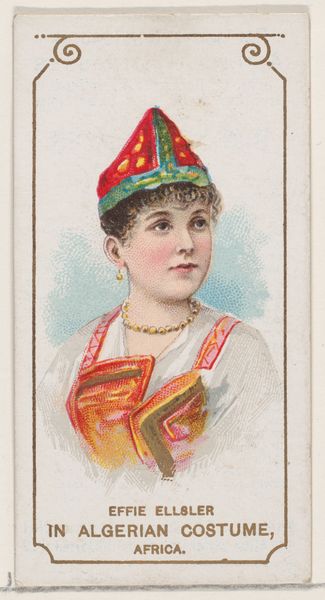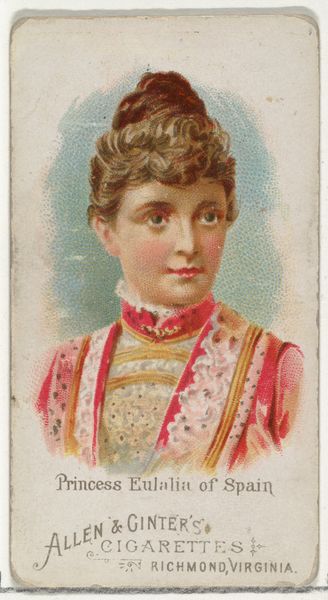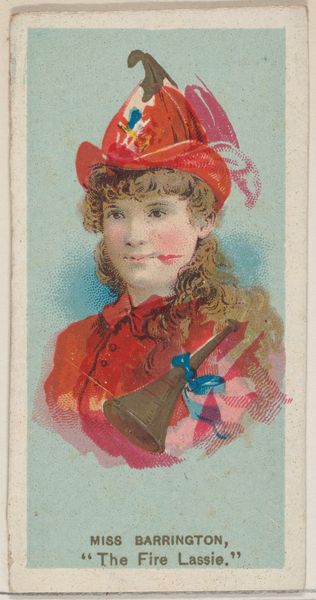
Marion Manola as "Bats and Rats," from the series Fancy Dress Ball Costumes (N73) for Duke brand cigarettes 1889
0:00
0:00
Dimensions: Sheet: 2 3/4 x 1 1/2 in. (7 x 3.8 cm)
Copyright: Public Domain
Editor: Here we have "Marion Manola as 'Bats and Rats'" created around 1889 by W. Duke, Sons & Co. It's a colour drawing, a small print actually, probably made with coloured pencils. There is a strange beauty to it, despite its simplicity and commercial nature. What stands out to you? Curator: What intrigues me is understanding this portrait not as a high art piece, but as a product within a system of production. Cigarette cards like these were essentially trade stimulators, mass-produced and distributed. Think about the materiality - cheap paper stock, the colored ink applied with likely mechanized processes. The image itself becomes secondary to the function: advertising and branding. Who was Marion Manola, and how did her image contribute to selling Duke brand cigarettes? Editor: So, it’s less about the artistic skill, and more about what this object *did* in the world? Curator: Precisely! Consider the social context: consumer culture exploding, mass media emerging. These cards helped create desire, associating the product with glamour and aspiration. Was there a workforce specifically dedicated to the card creation? Did the costuming play a role in defining standards? Look at the caricature-like representation itself. How does it affect labor involved to the commercial impact? Editor: I never really thought of art in this way – focusing on the raw materials, production and consumption cycle as much as, if not more than, artistic genius. Curator: That shift in perspective changes everything. Suddenly, a simple cigarette card becomes a rich source of information about the means of production, labor practices, and the construction of consumer desires. And by questioning that line between art and advertising, or high and low culture, we begin to see value beyond the aesthetic alone. Editor: That's definitely given me a whole new lens through which to view not only this piece, but pretty much anything. Thank you! Curator: A pleasure! Thinking materially grounds our interpretation, and makes even the most ephemeral image deeply relevant.
Comments
No comments
Be the first to comment and join the conversation on the ultimate creative platform.
